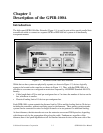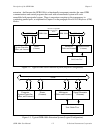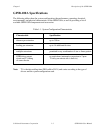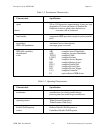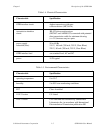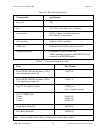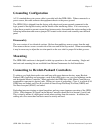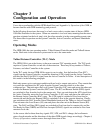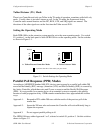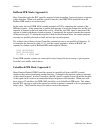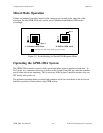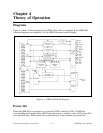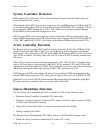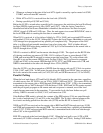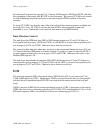
© National Instruments Corporation 3-1 GPIB-100A User Manual
Chapter 3
Configuration and Operation
Users who are unfamiliar with the GPIB should first read Appendix A, Operation of the GPIB, to
become familiar with GPIB terminology and protocol.
In the following discussions, the terms local and remote refer to certain states of the two GPIB-
100A Bus Extenders in the system. When one extender is in a local state, meaning that the state in
question originated on the local state's side, the other extender is in the corresponding remote state.
The three states in question are the System Controller, Active Controller, and Source Handshake
states.
Operating Modes
The GPIB-100A has two operating modes: Talker/Listener/Controller mode and Talker/Listener
mode. Both units in the extension system must be set to the same mode.
Talker/Listener/Controller (TLC) Mode
The GPIB-100A is set at the factory to the more common TLC operating mode. The TLC mode
requires a System Controller on one side of the extension. There may be any number of Talkers,
Listeners, and other Controllers in the system.
In the TLC mode, the two GPIB-100As expect to see in order: first the Interface Clear (IFC)
signal from the System Controller; second the Attention (ATN) signal from the Active Controller;
and third the Data Valid (DAV) signal from the Active Controller or Talker. A brief description of
this mode is in the following paragraph.
Both units power up in a quiescent condition with no local or remote state active. They remain that
way until one unit detects an IFC pulse from the System Controller which is on the same
contiguous bus. That unit enters the Local System Controller (LSC) state and causes the other unit
to enter the Remote System Controller (RSC) state. The IFC and Remote Enable (REN) signals
are switched to flow from the local to the remote unit. Next, one unit detects the ATN signal from
the Active Controller, enters the Local Active Controller (LAC) state, and places the other unit in
the Remote Active Controller (RAC) state. The ATN signal is switched to flow from local to
remote side and the Service Request (SRQ) is switched to flow in the opposite direction. Finally,
one unit detects the DAV from the Source Handshake function of the Talker or Active Controller.
That unit enters the Local Source (LS) state and places the other unit in the Remote Source (RS)
state. The DAV and Data (DIO) signals are switched to flow from local to remote side, and the
Not Ready for Data (NRFD) and Not Data Accepted (NDAC) signals are switched to flow from
remote to local side.
As the source side for these three key signals–IFC, ATN, and DAV–change, the local/remote
states of each extender and the directions of the other GPIB signals change accordingly. Chapter 4,
Theory of Operation, contains a more thorough discussion of this.



